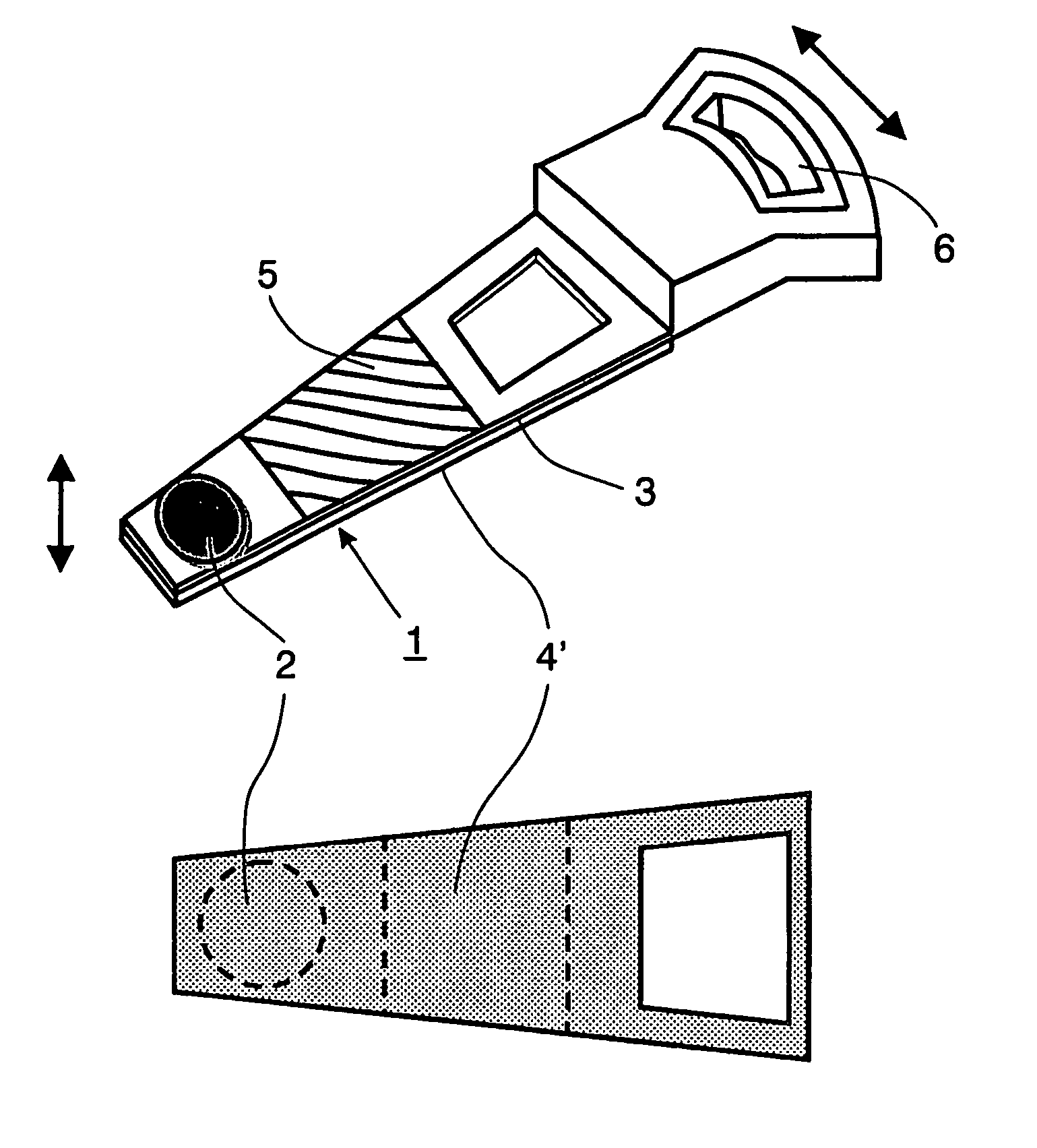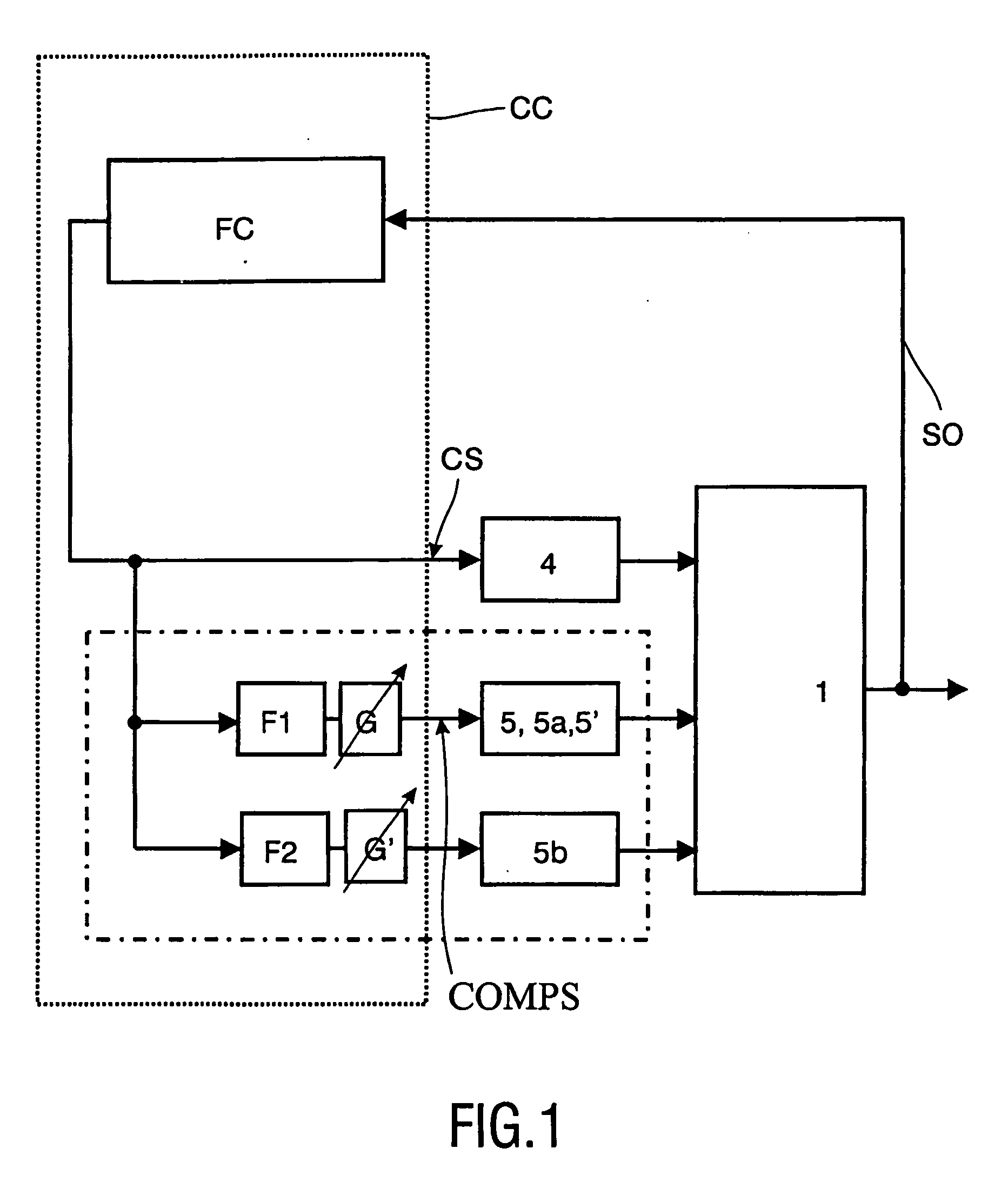Lens driving device for optical read and/or write system and optical read/write system
a driving device and optical read/write technology, applied in the direction of instruments, head carrier disposition/mounting, maintaining head carrier alignment, etc., can solve the problems of system instability, uncontrollable, and inability to design a simple system in practice, so as to improve high frequency characteristics and reduce one or more of the indicated problems
- Summary
- Abstract
- Description
- Claims
- Application Information
AI Technical Summary
Benefits of technology
Problems solved by technology
Method used
Image
Examples
second embodiment
[0029]FIG. 3. shows a This embodiment comprises the same mechanical structure as shown in FIG. 2, except that the piezo-electric element 5 is divided into two separate zones 5a, 5b. By feeding these separate zones 5a, 5b through different filters i.e. at different frequency ranges (see FIG. 1) and / or by designing them in such a way that more resonances are excited, more than one resonance can be compensated.
third embodiment
[0030]FIG. 4 shows yet a third embodiment, similar to the embodiment shown in FIG. 2, except that focus movement is not generated by a coil 4, but by a thin piezo-electric element 4′, for instance, glued on the bottom of the mechanical structure 2. The combination of piezo-electric elements 5 and 4′ makes the structure thinner and smaller, which in itself is an advantage. It is noted that the invention is to be understood to offer a route for reducing problems with resonances. The invention is not to be so restrictively interpreted as being unable to be combined with other measures of reducing problems with resonances. For instance, making the mechanical structure thinner and lighter (as in the example of FIG. 4) reduces the weight, thereby reducing power consumption. It may also lead to an increase of the resonance frequency, which is an advantage.
[0031]FIG. 5 shows yet a further embodiment of a lens driving device in accordance with the invention. It comprises the same actuators a...
fifth embodiment
[0032] A fifth embodiment is shown in FIG. 6. It comprises a lens 2 on a mechanical structure comprising a lens holder 3a, hinges 3b and a base 3c. The focusing and radial movements are generated by electromagnetic actuators of which only the permanent magnet system 7 and the radial coils 8 are shown. The resonance of the hinges during the focusing movement are reduced (compensated) by piezo-elements 9 on top of the hinges, while the resonances during radial movement are suppressed by piezo-electric elements 10.
[0033] Finally, FIGS. 7A and 7B illustrate in a graphical form the effect of the invention. In this graph, experimental results are shown for an embodiment as schematically shown in FIG. 2. The horizontal axis denotes the frequency, whereas in the vertical direction gain (ratio of SO / CS in dB) is given (FIG. 7A), and the phase difference. Two lines are drawn, one (the solid line) without use of a compensating actuator, the other (the dotted line) with use of a compensating ac...
PUM
| Property | Measurement | Unit |
|---|---|---|
| frequencies | aaaaa | aaaaa |
| resonance frequencies | aaaaa | aaaaa |
| resonance frequencies | aaaaa | aaaaa |
Abstract
Description
Claims
Application Information
 Login to View More
Login to View More - R&D
- Intellectual Property
- Life Sciences
- Materials
- Tech Scout
- Unparalleled Data Quality
- Higher Quality Content
- 60% Fewer Hallucinations
Browse by: Latest US Patents, China's latest patents, Technical Efficacy Thesaurus, Application Domain, Technology Topic, Popular Technical Reports.
© 2025 PatSnap. All rights reserved.Legal|Privacy policy|Modern Slavery Act Transparency Statement|Sitemap|About US| Contact US: help@patsnap.com



